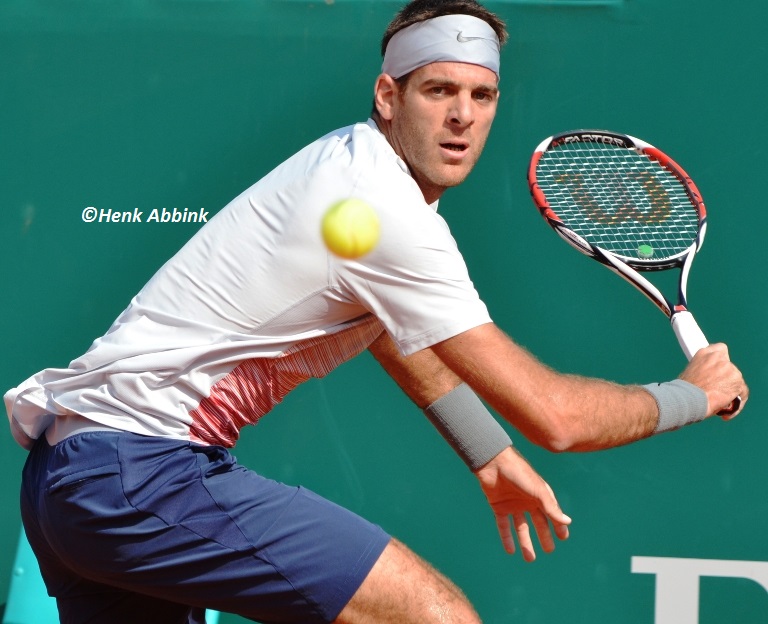
Franco Davin is rarely credited as a top coach. Despite achieving career best results with Juan Martin Del Potro, Gaston Gaudio and Fabio Fognini (they just split), Davin is largely under the radar for his professional tennis acumen. I read some of his Instagram posts and decided to share some of his interesting insights and advices here.
The importance of first shots
Let’s imagine whenever a match starts. What do we know from kickoff?
1) The first shot (serve) is gonna be disputed in every single point.
2) Second shot (return) is going to be disputed on the same or minor percentage. Whenever an ace or double fault takes place, it’s not happening.
3) The third shot will be disputed whenever we lack aces, double faults, winner returns or mistakes during the devolution. It’s logical to think that the third strike will appear in a less frequent way than the first two shots.
4) So here we can follow up with an endless succession of strikes, which will happen in a less frequent way than the previous one.
So let’s say, we can conclude that the important thing is to learn how to play for the first strikes, because they are the most frequent ones. Whenever we play a 10 or 15 rally, we cannot avoid the first one, two or three shots.
We can add also that the way a point develops is deeply influenced by the first strikes.
And something else: if we can direct our ball to one particular spot on the court, we are shortening ours rival area of responses (Tennis is very geometric). With the first strikes, we can force our rivals to direct the ball wherever we like.
———————–
Avoid thinking out loud
In my opinion, one of the most important subjects as a coach is to avoid thinking out loud.
Whenever I think a player needs to improve some aspects of the game, I don’t let them know immediately.
Why? Because I think improvements come after a series of steps:
1) Realizing certain observations from different perspectives.
2) Being sure that the change is necessary and imagining what I want to accomplish.
3)Designing a strategy to achieve the improvement, starting on how to approach the player, creating new exercises, the moment we should force the change and measuring the effectiveness of the work.
We should not forget: every single player is unique and a different strategy should be adapted to everyone.
I really think by highlighting a defect, we are not pushing towards progress. Actually it seems more counterproductive.
Watching, analyzing and take as homework building a strategy is, for me, the most effective thing.
———————
In my opinion, one of the most difficult as a tennis coach, is shaping our player’s profile during their formative process.
And what I mean with this is, imagining how our players will perform whenever they reach the pro level.
It’s right here when a lot of things happen: some of them will wonder how they would like to play, some other will try to adapt the game due to their characteristics and so on. An infinite number of variables will come up at the time of settling a conversation with our player.
Asking our players to highlight 4 main characteristics they would like to acquire to their game in their future help to us coach to organize and guide our work. Incredibly, this question marks us how well our player is walking towards their goals and it also shows us their perception of the game.
I always try to be creative in this process. A few years ago, we asked several U14 players if they could name 4 animals that may have a useful characteristic for playing Tennis.
Answers were pretty good but there were only two of them that came up to me as a complete surprise: “The ant because it will try to win every single point of the match: both the good ones and also the bad ones” (I really thought about Nadal) “The condor, because it will raise to a considerable height and would watch the match from above, understanding everything better” (I thought about Murray)
By watching a Tennis match from above (we’ll discuss this topic during the next post), we can assure that Tennis is a solely geometric sport and this, brings up some consequences.
Knowing where are we going, allow us to choose the best path.
————-
As regards pressure (the main subject we discussed during our last post), we reached @pablo_pecora and he told us: “Whenever players feel under pressure, it’s easy to notice how their systems become unorganized. It’s easy to witness how they give up quickly, they try to avoid the moment with complaints and excuses, they irritate, defeat is just around the corner.
Players who are submerged in their emotional world, absorbed by the consequences of the tie, are inmature as regards competitiveness and may be a victim of high pressure sports.
Only a small group can handle uncomfortable situations, can play to their 100%, continue struggling without a complaint, they stick to a pre-shaped plan, even if it’s the one for an emergency situation, they compete DEFYING THE MOMENT. What happens with the other players? The ones who even responding to an unconscious pattern are not able to overcome, to win. They travel to a predictable model of failure because they are not sufficiently prepared regarding their mentality.
Not knowing our player in order to anticipate pre-expected reactions and not finding these times to practice moments of tension, anguish with the work team, it’s an inconvenient.
We must break pre established beliefs, knowing which kind of emotion may kidnap our player during the middle of the match and have physical, mental routines to face the moment and overcome the situation.”
———–
Epochs
In my opinion, it’s great to introduce young players into the conversation and discussions about Tennis. I think it’s both useful for them and us.
Not long ago, they told me that yesterday’s players wouldn’t be able to match up against the current players.
I’ll add something: I think that the best players from past times, would play differently in today’s Tennis. I’m pretty sure they wouldn’t do the same things they’ve done during their peak: they’ll design a game strategy to overthrow the ones who are higher.
Actually, it’s the same thing they did during their times. They designed a game strategy to defeat their rivals.
Needless to say, they wouldn’t be able to perform the same game in today’s Tennis.
I close my eyes and I imagine myself watching a 14 years old Guillermo Vilas and I’m sure he’ll be planning a way of surpassing Federer, Djokovic or Nadal.
And I’ll go one step ahead: maybe present young players are not thinking about how they can defeat the top players, instead, they are probably copying them. Maybe, this is the main cause why they won’t overthrow them until the Elite players have a low performance due to their age or injuries.
In 2019 Davin published a book in English and Spanish titled “Game, Set and Math.”

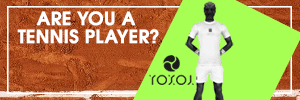

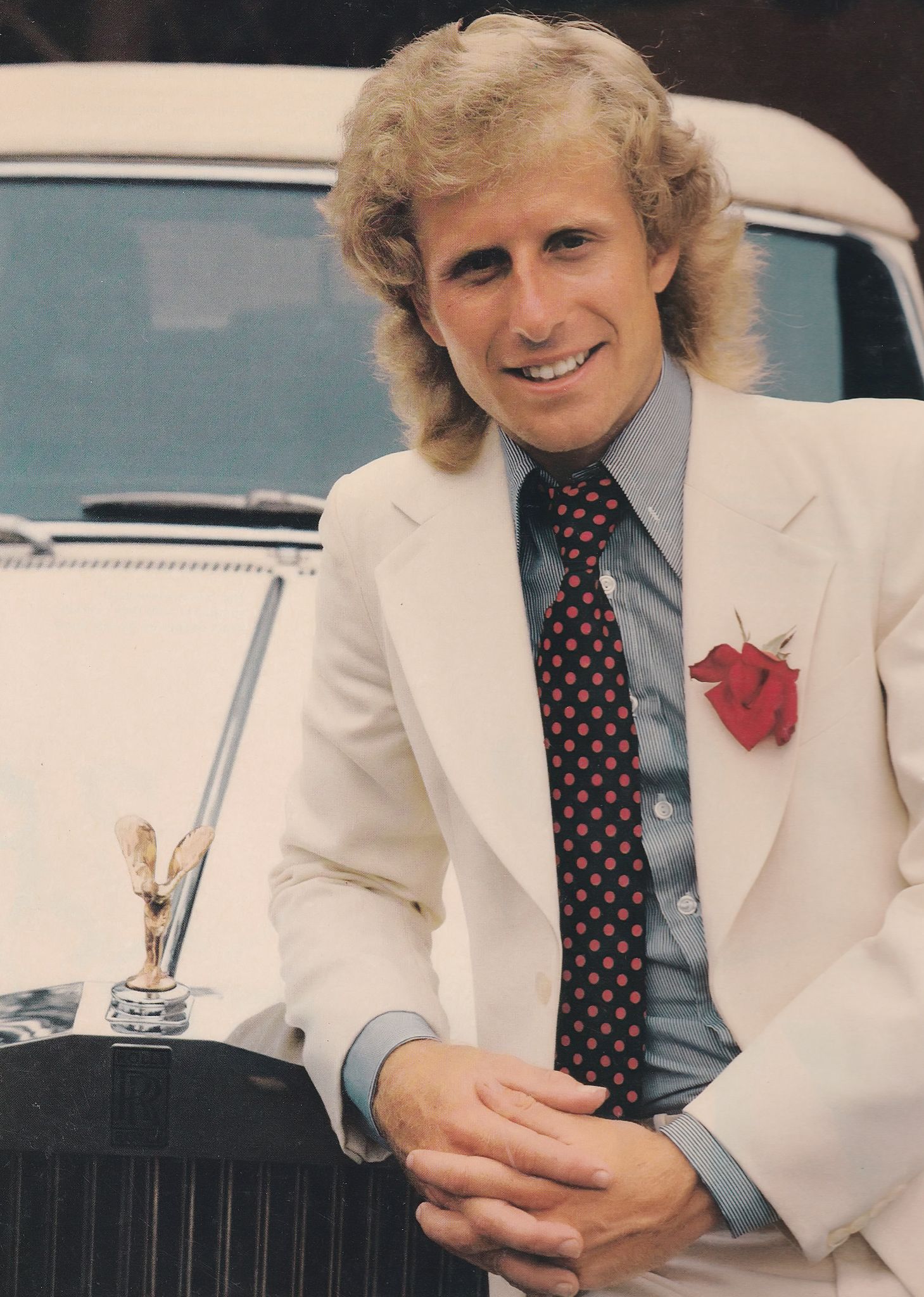
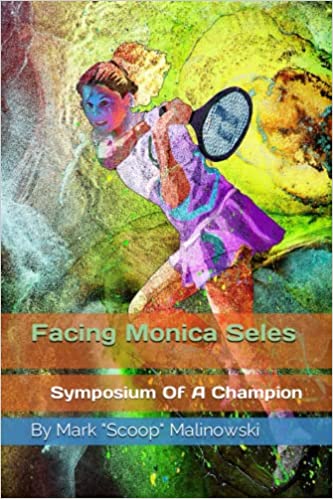
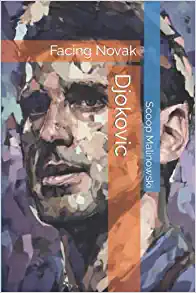
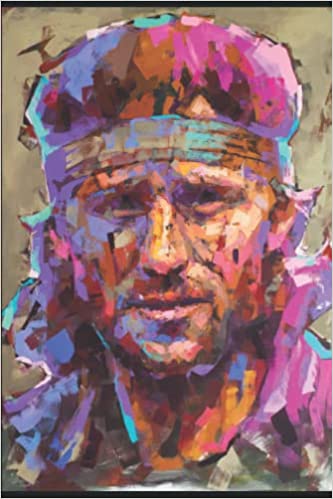
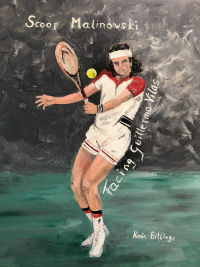
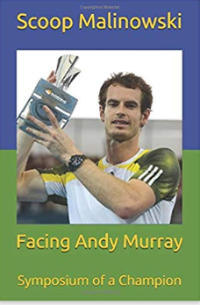
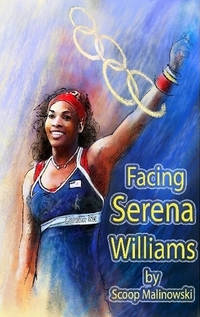
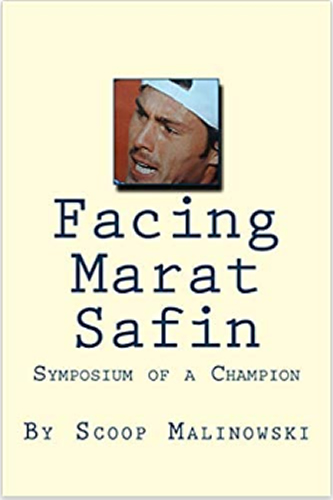
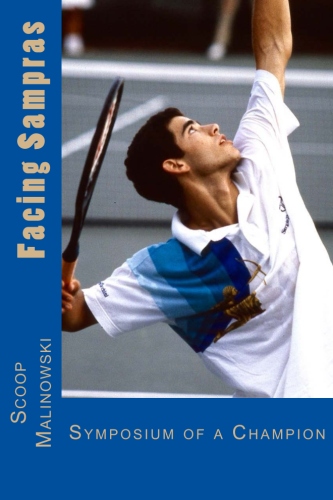
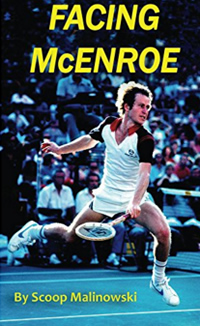
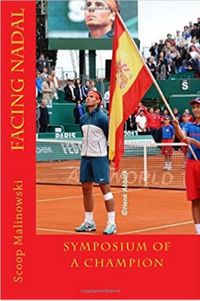
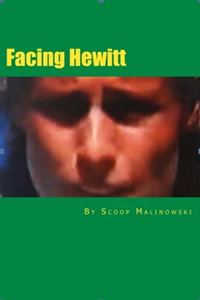
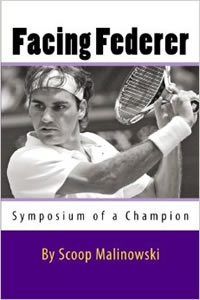
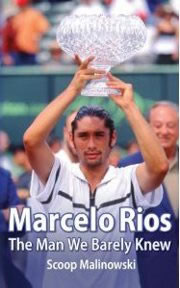

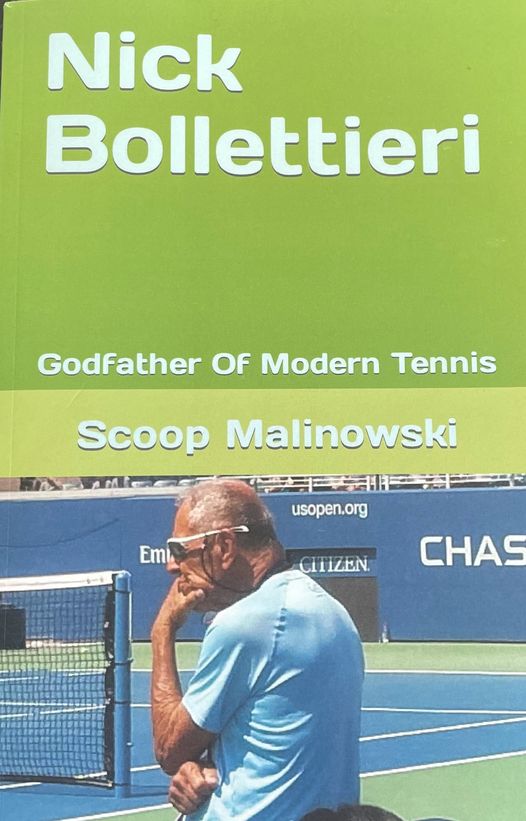

-

-

-

-

-

-

-

-

-

-

-

-

-

-

-

-

-

-

-

-

-

-

-

-

-

-

-

-

-

-

-

-

-

-

-

-

-

-

-

-

-

-

-

-

-

-

-

-

-

-

« Previous 1 2 3 4 Next »Jon King · November 27, 2019 at 2:15 pm
It looks like Shishkina and her mom got heavily involved with a born again religious group in Texas. Sometimes these groups ‘adopt’ members, etc. Maybe the name change and listing father as Carlos Ortiz is related to that. Lots more Ortizs in Texas than in Russia!
catherine · November 27, 2019 at 2:40 pm
All sounds like something from the Dark Web.
Andrew Miller · November 27, 2019 at 2:43 pm
I guess. The point on modeling is interesting. Seems like a US thing because in places like Italy modeling is a career, and in the U.S. somehow it’s something athletes do in addition to career models. The fuss here is nutty. Reluctance to committing to one career (or cynically to one income stream).
Could be that Myskina etc couldn’t get a modeling contract (possible). Czech republic and Slovakia players sometimes are lights out in terms of looks that are in demand, but their modeling is pretty lite because (sorry to say this also) hot for tennis isn’t the same as modeling in Czech Republic, Slovakia etc. I’m sure Hantuchova hawks a lot of products in Slovakia but as compared to other pro models she’s zero.
(I say this as a cynic, it’s a fact – there’s only so much Revlon wants to pay any pro tennis player, it’s not a real career for them, just an add on cash stipend).
Andrew Miller · November 27, 2019 at 2:45 pm
There’s also a messed up thing in US where players are expected to be everything, actor singer model tennis player volleyball star captain of etc
Another reason to like Lansdorp. He’s like are you here for tennis because that’s what we do. old school.
Hartt · November 27, 2019 at 2:46 pm
Andrew, we had this discussion about my being a “she” some time ago, but I guess you weren’t around then. Catherine was the only one who had it right, obviously she was able to recognize another woman.
catherine · November 27, 2019 at 3:10 pm
Hartt – that’s partly true, that I guessed you were a woman from your writing but I admit I also knew because you posted your full name when Tennis.com were switching over and you all departed to MCM and Disqus. So I wasn’t amazingly intuitive.
Andrew needn’t worry. Everyone else here is male. I’ve sometimes wondered why.
Hartt · November 27, 2019 at 3:48 pm
They just aired the 2nd part of the interview with Michael Joyce. He talked about what it was like being the subject of the David Foster Wallace piece. He played against Greg Rusedski in that Montreal tourney where Wallace was following him. This was after Rusedski had defected to the LTA, and the entire stadium was rooting for Joyce. He said there were even posters calling Rusedski a traitor. Joyce said of course he won the match.
He talked a bit more about working with Maria (for 7 years), and also with Vika. He was impressed with Vika, especially how hard she worked. But that was when she had the custody issues and couldn’t travel to tourneys, so the coaching relationship did not last. He felt she had made a big mistake switching from the Wilson racquet to Yonex, and talked about how players were nuts to do that simply for a better $ deal.
Asked about the meldonium issue with Maria, he said her team was very negligent in not being on top of the banned list. Joyce said that when he works with a player who doesn’t have someone to deal with the list he gets his wife, a nurse, to do that.
Hartt · November 27, 2019 at 4:00 pm
Catherine, it is interesting that there are just 2 female posters here. Match Call Migrants is slightly bigger, and there the split is about 50/50, with the balance probably a bit towards female members.
Andrew Miller · November 27, 2019 at 5:54 pm
Hartt, that’s interesting Joyce said that. I think he switched from Wilson (where he had good results) to Yonex (somewhat less good) and from experience was trying to say hey don’t do this! I notice pro players struggle with the switch specifically to Yonex – once they get the handle of it it works fine. But almost to a one there are years of struggle. I believe the Bouchard switch from Babolat to Yonex seems like a mistake, she doesn’t get the same oomph on the ball.
Andrew Miller · November 27, 2019 at 5:57 pm
My favorite read on Michael Joyce. He seems like a solid coach. Not sure what happened with Sharpie. Maybe Scoop’s shadow knows?
https://longreads.com/2017/01/17/michael-joyces-second-act/
Jon King · November 27, 2019 at 6:06 pm
We first started using Yonex about 5 years ago, no juniors girls used it. Our local tennis shop scoffed at the idea of carrying it. Most of the girls used Babolat, the stiffness gave them extra power.
Everything changed the past few years. Now Yonex is everywhere with junior girls. Our local tennis shop started carrying it in stock the beginning of this year.
Yonex sticks are so comfortable. My daughter has always had crazy power, even as a little one, so that was not an issue. Yonex allows her to swing crazy, play a lot, and never once has she had even a hint of arm discomfort that she had with other frames. Flexible frame, comfortable strings worked for us.
Some of the Babolat girls who used the stiffer frames for power when they were little have had arm issues. Of course there are other factors that could be to blame.
Yonex frames can compromise power a bit for players without great racquet head speed. But for those who want arm comfort, and can generate power on their own, they are nice. By the way, the Wilson frames are the 2nd most flexible and comfortable…the new Wilson Clash is very comfortable and flexible.
Andrew Miller · November 27, 2019 at 6:33 pm
Jon, that could be it, the racquet head speed for a few players that are more sleight. They have greater touch with the Yonex but their power is gone. Wozniacki is different, different kind of game. Osaka has power to spare. I don’t know the sticks well enough, just saw that some players haven’t adjusted while some like Wawrinka have. Those with power appreciate it, it seems. Those without maybe should rethink it.
Scoop Malinowski · November 27, 2019 at 6:41 pm
Yonex is taking over. So many key pros use Yonex now and so many super talented ones in the past – Rios, Hewitt, Nalbandian, Hingis, Seles – now Kyrgios, Bouchard, Wawrinka, Osaka – these are players that people follow and want to be like. Plus its a quality product obviously.
Hartt · November 27, 2019 at 7:20 pm
Joyce said that Vika went back to her Wilson racquet, painted black.
Seems to me that Shapo switched to Yonex and liked it. Of course he has no problem generating power.
Hartt · November 27, 2019 at 7:51 pm
Andrew, I enjoyed reading the article about Joyce a second time. I especially enjoyed this part:
“But here’s the thing about seeing professional tennis players up close; they are insanely good, with superlative power, steady hands, and the type of endurance usually reserved for long distance runners or professional soccer players. Maybe as a result of this constant demand for high physical and mental functioning, they are also prone to bouts of public hysteria that make the majority seem, at least on the surface, a little unhinged.”
In the interview Joyce said that Sharapova had hired Hogstedt as well, and after a while that wasn’t working. He thought that part of the reason they split was simply that they’d been working together for so many years.
Jon King · November 27, 2019 at 8:38 pm
It was funny because 5 years ago we considered Yonex as our secret weapon. Swing as fast as possible, develop racquet head speed, and never get any arm soreness that can derail hard hitters. But the secret is definitely out now!
And Scoop it is a very high quality product. We have 3 frames that are several years old, thousands of hard hitting hours on them, and no loss of performance. Thats unheard of for a hard hitting player to be able to use the same frames for years with no noticeable changes.
catherine · November 28, 2019 at 12:40 am
Kerber uses Yonex and she has problems generating speed on slow surfaces. Any connection ? I wouldn’t know, but some people have mentioned it. She’s used Yonex for years.
catherine · November 28, 2019 at 5:35 am
It was interesting, and maybe a little poignant, to read in the Michael Joyce piece, how disappointed he felt that he and Wallace had not stayed in touch. Perhaps he had a fantasy that somehow they’d become and stay friends. Wallace ended up knowing as much about Joyce as anyone else I suppose.
But that didn’t happen, and the fact that it didn’t happen, and that Joyce minded, is one of the traps of this kind of journalism. Your subject doesn’t know what you’re going to write, and when you’ve finished and you feel satisfied, and I imagine DFW felt satisfied, they are left alone with the fallout and the shaming knowledge that all the time, while busily revealing themselves, they were being used.
I understand the wariness.
Hartt · November 28, 2019 at 7:57 am
Sascha Zverev has a new GF, model Brenda Patea. There are photos of them vacationing together in Mexico, so this looks like it is true. 🙂
She is tall, so she probably enjoys the fact that Sascha is very tall.
catherine · November 28, 2019 at 8:50 am
Hartt – Sascha has a new girlfriend every time I look.
You are now the official gossip correspondwent of T-P 🙂
Dab Markowitz · November 28, 2019 at 9:21 am
Interesting points on junior tennis and racquets. Babolat in New York-area is still the top-used racquet I’d say in observation. Callum still uses it and we’re about to switch from the Team (10.1 oz) to the Aero Pro (10.6). I personally hate Babolats, the heavy feel to them, the thick head, but Callum loves his racquet. Dunlop was going to give him free racquets and a bag, strings, hats, sweatbands and they sent us about five different racquets to demo. I liked a couple of them (I use a Volkl because I feel they’re good for my shoulder that I’ve had rotator cuff surgery on twice), but Callum wouldn’t budge. His coach also said he shouldn’t switch racquets because his game is based on big-hitting (he can match power with his coach and the coach’s hitting partner and the coach played on ATP Tour and his hitting partner was no. 1 player at Clemson eight years ago) and Babolat provides the most power.
Callum is currently on a 19-match winning streak as we go out to Long Island to play in a 16’s Level 1 tournament tomorrow. Callum hasn’t lost a 14’s Eastern match in the last 14 he’s played winning his last two finals in big Eastern tournaments, 1 and 1 and 2 and 0. But now at 13 he moves up to play in the 16’s except when he plays National events like in Tucson next month for the Winter Nationals.
I like Lansdorp’s list of what he likes to see in a young player. I’d add one more that he doesn’t address and that is variety of game, not at the 8-10 year old level, but later starting around my son’s age, 13, if I see a kid who doesn’t have multiple serves, kick, slice etc., can’t hit a one-handed slice shot well, doesn’t know how to hit approach shots or volley and doesn’t have high level passing shots or winning lobs, I don’t think that boy–not as much with the girls though, but I watch very little girls junior tennis because Callum doesn’t practice with any girls anymore because his new training center has very few–has a good chance of developing into a high-level Div. 1 player.
Jon King · November 28, 2019 at 9:33 am
Dan, sounds like Callum is doing great! Babolat is definitely the most powerful racquet. And even though it can cause arm problems, many, many use it forever with zero problems. As long as technique, warm up, conditioning, flexibility, strings are right, its a fine stick. We spend a ton of time on injury prevention, strength, flexibility, recovery.
Agree on variety. Thats my pet peeve with the girls. So many compete early and often and stick with the same game. You go to a G14 and G16 and 15 courts of girls all look identical, playing the same games. The boys have way more variety when you watch them play side by side.
The little secret of girls tennis is almost all of them stop developing at age 12.5-13.5. If you saw them play at 12-13, then saw them again at 18, their games look the same. Boys its totally different, they keep adding to their games right through the teen years and sometimes beyond.
Hartt · November 28, 2019 at 12:57 pm
It is disappointing to hear that the girls aren’t adding more variety to their games. Unless that changes fans will be stuck with a lot of boring players, with just a few bright spots.
Hartt · November 28, 2019 at 1:05 pm
Catherine, yes Sascha does seem to have a frequent change of GFs.
In my gossip columnist role, there were reports in the Slovak media that Cibulkova retired because she is pregnant, but I haven’t been able to find confirmation of that. With not much happening on the tennis front, the gossip stuff keeps me amused.
In more actual tennis news, Dobre is no longer part of Halep’s team. She thanked him on FB. With Cahill back as Simona’s coach, this is not really a surprise.
catherine · November 28, 2019 at 1:20 pm
Hartt – this subject has come up many times on T-P and I can’t see the situation changing – unless we accept the possibility that some girls/women may add variety to their games a little later than boys and may even do so after they get older, maybe turn pro and work in an individual way with a coach. Girls have a big group feeling, in my experience more so than boys – pressure to conform etc. Exceptional young women players can break out of that if they have ambition.
Just a thought.
catherine · November 28, 2019 at 1:22 pm
Not surprising if Cibulkova is pregnant – she’s been married a couple of years and is around 30-31 ?
Dan Markowitz · November 28, 2019 at 5:20 pm
I would think Joyce would feel honored to be captured and immortalized in David Forster Wallace’s piece on him. This doesn’t happen to your average journeyman player. I wonder Catherine, how do you think Joyce feels “shamed” by Wallace focusing his keen observational and writing skills on Joyce? Athletes are notoriously unaware–the best ones at least–of their impression on others because they’re usually so absorbed in their activity. We all want to be seen so I’d think Joyce would not feel used by the article.
Scoop Malinowski · November 28, 2019 at 5:28 pm
Michael Joyce is not your average journeyman player. His career looks that way but if you ever talk with him or interview him you realize he’s a super high quality interview. He was fantastic for my Rios book. One of the best parts. He’s a low key guy but an excellent coach, excellent tennis mind. I think he had the talent to be a top player but maybe not the work ethic and discipline, always seemed a little out of shape in his playing days.
Scoop Malinowski · November 28, 2019 at 6:34 pm
It’s easy to forget, even players that get ATP points and never breeak the top 500 are still amazing players. Many great amazing players never do anything in the pros. Joyce was an amazing player but against the best players they made him look like nothing. Who remember Julian Jean Pierre? Beat Agassi at French Open one year. Never won any other notable pro matches. Journeyman player who played some great tennis.
Hartt · November 28, 2019 at 6:58 pm
Joyce said that as time went by he felt better about the article, but when it came out there were things that bothered him, such as Wallace speculating that he was a virgin.
Scoop Malinowski · November 28, 2019 at 7:19 pm
Very bizarre assumption by Wallace, very uncalled for.
Andrew Miller · November 28, 2019 at 11:26 pm
Wallace wrote a fantastic piece on Joyce and the tour. He messed up in the piece and also described the Joyce game better than most people who will ever live will ever write about anyone hitting a tennis ball. Sometimes we may want to consider taking the good with the bad. We may hate that Djokovic plays the bad guy, but how else could he play to break open the tour? We may dislike that Sampras gave the press nothing, zero, but has anyone in the game ever served better? As in, ever?
I’m glad the chatter is kept to reporting right by a player, and Joyce has more than proved himself over time and may even be the heir to Lansdorp. But that wasn’t even the most memorable part of the piece.
Wallace himself was a tennis player and a good one. Yes he speculated, and yes he made errors. But players today would be fortunate to get a Wallace kind of piece rather than the puffery that ends up in ESPN The Magazine. If they’re even more fortunate they’ll get a Secret Diary of a Pro Tennis Player or Facing (Player) book.
Seriously the rate at which tennis journalism is getting eaten up is way too fast. Lucky to get any features at all, Sports Illustrated hardly covered the US Open in the print edition, and outside of Wertheim’s reporting there was a lot of fluff. With the rise of Tennis Tonic and WTA “you call this a match summary?” Website (filler) and direct from player reports via Instagram, we’re losing some tennis writing. More content doesn’t mean better content.
Andrew Miller · November 28, 2019 at 11:43 pm
Joyce was a top top US junior. I saw him beat Stich in Miami under a year after joining the tour. I think he was playing with the old FPK Wilson ultra racquets, strung yellow I think. He hadn’t been on tour long and already had a good game.
Caught him again in DC and seems like he wasn’t doing so well. He won his first match but wasn’t in the kind of shape to handle his next match, which of course was against Rios. I had just caught Rios practicing and couldn’t believe what I was witnessing. They played the next day. And it was over quickly.
Rios lost to Srichapan that tournament. Srichapan was very good, and I’m sorry he quit. He was like Wawrinka before Wawrinka.
Joyce didn’t seem like the same player when I caught him in 2001. It was six years later and Joyce wasn’t able to handle the elements as he had on first joining the tour. He was skilled so he knew how to win even when his physical fitness was off, but that wasn’t going to fly against a guy who was far better and motivated. Rios was motivated that tournament, took out Corretja if I remember correctly. Even if they were evenly matched Rios was MUCH better than Corretja.
Corretja should NOT have a facing Alex Corretja book!!! When I saw him practicing he was swearing like no one’s business. He had a reputation as a nice guy but on the practice court he wasn’t. A bit insulting. I could tell Corretja wasn’t going to stick around the top of the game, one of few times I was able to tell that!
Andrew Miller · November 29, 2019 at 12:07 am
Some #500s are better than #400s etc. Knew one guy in that echelon. He was smooth, but lacked in nearly every department. Some of those guys don’t have a chance because of money etc. The guy in the 400s was wealthy. The guy I knew in the 500s couldn’t play anymore because his sponsor died in a freak accident and that was it for him, he was on the tour for only about four hundred days, got top six hundred. Beat Pat Rafter, beat Javier Sanchez in juniors, beat the top US player in the 18s. Sponsor died, his ranking tanked as he searched for a new sponsor, stayed in tennis as a profession, coaches high school now.
He was better than other guys I played ranked similarly, he had an edge and was a superior athlete. Probably his mistake was going to college, but I think he had other issues in his family too, maybe loss of his dad. Kept getting hit by freak things, said that’s it, can’t follow my dream, will just help others get it.
Can’t tell you how many people in tennis in Florida have a similar version of this story. A lot of promising players who got burned or burned out. Stock brokers that were top juniors. Stringers that were very good players no degree so no Plan B. The guy who was top twenty nationally? Drugs, showed up high to our match I think and of course killed me.
Andrew Miller · November 29, 2019 at 12:45 am
This recent Michael Joyce podcast is excellent. Joyce is pretty level. Amusing on Bouchard. Works hard for a month. Takes a month off. Prefers hawking product on Instagram. Amazing. Said when she trains he thought wow easy back to top thirty. Then she says taking time off.
Basically he said, can’t get back to top thirty if instead of playing a tournament you’re at the beach. This is ridiculous.
Very good stuff. Encourage a listen if anyone can catch it.
Essentially Joyce is so in demand he can part ways with a coach and then within a week be working with another player. Only takes on assignments where a player works. Currently with Babos said she’s great!
https://underreviewtennis.com/podcast/michael-joyce-1/
catherine · November 29, 2019 at 12:46 am
Dan – I was generalising from Wallace’s piece on Joyce to the problems of that kind of writing. Joyce was ‘bothered a bit’ that he and Wallace didn’t stay in touch, although they were once or twice in the same place at the same time. I guess he would have liked it if they had been friends of a kind but Wallace didnt see it that way. Federer of course was exposed to the Wallace treatment but I don’t get the impression that he wanted anything to do with him after their meeting.
Journalists who do that kind of profile tend to do the work and move on. Sometimes leaving hurt feelings, or worse, in their wake. I’m sure you’re aware of Janet Malcolm’s famous quote about that. I tend to agree with her.
catherine · November 29, 2019 at 1:03 am
Andrew – one of the reasons tennis journalism today is so bad, and it is on the whole, is that reality doesn’t enter into writing because so many people have to be kept happy – players, sponsors, tv, it all trickles down. By the end of the 80s, probably even before then, personal access was more or less impossible for a journalist and you had to be pretty well established to get away with anything which could be even remotely categorised as ‘negative’ – and that covered a wide field, believe me.
Hartt · November 29, 2019 at 7:53 am
I’ve recently discovered the Under Review tennis podcast. I talked a bit about the last 2 interviews with Michael Joyce and agree with Andrew that the last one was very interesting, as well as the preceding one. Obviously Craig Shapiro thinks that Joyce is an excellent guest because Joyce has been on the podcast at least 4 times.
I just finished listening to the episode with Jimmy Arias, done when Arias was at the airport right after this year’s Wimby. They talked about the usual subjects: the Federer vs Djokovic final, the Fed vs Rafa SF, Zverev, Tsitsipas, etc.
One thing I found especially interesting was what Arias had to say about this year’s junior winner, Japanese youngster Shintoro Mochizuki. He trains at the IMG academy and Arias said he’d never seen a player develop so quickly, and that he is a fun player to watch. He doesn’t have a lot of power himself, but is very good at coming in and redirecting his opponent’s power. He is sponsored by the same Japanese businessman who supported Nishikori and Nishioka.
Scoop Malinowski · November 29, 2019 at 8:42 am
Did this Biofile with Michael Joyce about eight or nine years ago… https://www.tennis-prose.com/articles/biofile-with-michael-joyce/
Andrew Miller · November 29, 2019 at 9:33 am
Thank you Hartt for recommending the podcast, I was trying to figure out how I heard some of the story and said wait didn’t Hartt talk about Joyce working with Bouchard and saying she worked hard?! I remember seeing Bouchard work hard a few years ago but hearing the Joyce take makes me think journalists following Bouchard didn’t have the knowledge that as her social media world flourished her tennis didn’t.
Thanks again for recommending we listen to the Joyce piece, you were right it’s a worthwhile listen!
I think you mentioned DKat also? The Joyce take their was a keeper. Something along the lines of, “Could have told you that ranking was going to dive…no coach!”
I got the sense from listening to Joyce that like Bajin he considers himself an expert for hire. Unlike Bajin when talking about doubles he seemed to have a little more interest in what the player was interested in. It was clear from listening to Bajin that he considered Mladenovic someone he was working with only for a short time because he considered himself coach of the elite elite slam winners, but that doubles was important.
With Joyce it was like doubles is important to the player, full stop. We have been playing well. Much more secure in his take I think. Maybe that has to do with the fact Joyce has the training and experience, and Bajin doesn’t. Maybe that Joyce is a parent so he has more to think about.
Other thing Joyce made clear I think, was that Bouchard looks at social media as a money maker versus tennis. And Joyce, not even cynically, is like get your form back and you’ll make three million US dollars a year easy plus sponsorships. It wasn’t even a big deal for Joyce to say it, he said it without pause. As in Bouchard doesn’t believe she’ll get her form back so has already settled into a new career, and tennis supports that career rather than the other way around.
Sorry to get so wrapped up in this. The Joyce podcast was a revelation. Refreshing to hear a player say here’s what’s important for this player: they wanted this, they put in X amount of effort, with Y amount of effort they’d get their confidence back, they weren’t willing to do it, or they dropped their coach, or their game looks like mush.
I like that.
Andrew Miller · November 29, 2019 at 9:40 am
re Wallace as a writer, was great. Just that as it came to Joyce, as right as he was about Joyce as a player and on Joyce’s matter of fact personality as well as some simple frames that Joyce STILL uses with people (he is a tad unaware, but genuine!) , it’s sad Joyce isn’t around to write the follow up: Joyce is one of the better coaches on either tour, and nearly everyone he works with does better with his help. He may have only been top seventy as a player, but he may be a top ten WTA coach. And as a player he was very good. Just didn’t have some of the things other guys had, and his injuries were also awful.
catherine · November 29, 2019 at 9:58 am
I wonder why Joyce lasted such a short time with Johanna Konta, just the year I think. He succeeded Fisette who also only lasted a year. Suggests the problem is Konta, although she’s continuing with her current coach.
The public reason for Joyce and Fisette leaving Konta was the same, and the same as Kerber’s for splitting with Wim – their aims for the future differed in some major way, so it was probably true.
(I thought it was interesting that Joyce was bothered about Wallace not keeping in touch whereas I imagine Federer was impervious to Wallace in a personal way.)
catherine · November 29, 2019 at 10:04 am
What’s the betting that Sascha Bajin never works with an elite slam winner ever again ?
Hartt · November 29, 2019 at 10:14 am
I am now listening to the podcast with Mary Carillo (recorded last March at IW). The more I learn about players the more I am struck by how many have multiple surgeries. Carillo said that even as a young player her knees were made of glass. She had 4 surgeries on one knee, and that problem affected her other knee. She said one reason she chose not to go to college, even though she had scholarships, was because she thought her knees wouldn’t survive 4 years of hard court tennis.
Jon King · November 29, 2019 at 10:37 am
Hartt, I’m afraid the future of women’s tennis is indeed the same game, with a very few players coming along that play unique styles. Its only getting worse because of 2 factors.
The first is Universal Tennis Rating. (UTR). All the girls and parents started fixating on it 3 years ago. Players are playing more cautious than ever to protect their UTRs. Every game won helps UTR so play careful tennis and win 6-0 rather than try new shots and win 6-3. Its so hard to try new shots when you are concerned about winning every game, let alone every match.
The 2nd factor is relatively new. Now almost all the girls are fixated on playing ITF matches. Most girls are being flown all over the world seeking the best draw in ITF tournaments. Girls that used to play local developmental events and work on their games are now obsessed with ITF points. So much more time and effort is needed to fly all over, stay in hotels for several days, play, etc.
So unfortunately the time spent on player development and expanding their games is decreasing with each passing year. The future pool of girls to play pro tennis will have little variety.
catherine · November 29, 2019 at 11:36 am
Jon – I don’t know very much about the junior set up in the US, or ITF events come to that, but is it possible to develop as a player outside the UTR system and avoid playing lots of ITF events if you can get points any other way ? Do the local events still exist ? Who pays for girls to travel to ITF tournaments ?
How did girls progress before the changes you mention ?
Jon King · November 29, 2019 at 12:24 pm
catherine, several factors have caused an earlier bent on competition. The green ball tournaments allowed girls to play ‘real tennis’ at an earlier age. The parents and kids then became interested in winning at an earlier age. The girls then progressed after they went to yellow balls to traveling to tournaments earlier and earlier.
10 years ago we would see girls practice 3 hours in the morning, another 3 hours in the afternoon. The split sessions would emphasize all aspects of the game, slices, net approach, angles, etc. These girls would then enter a level 6 or 7 local tournament, and the fields would be quite good. They could work on all their game within 20-30 miles, then be right back at practice the next Monday.
Now so many players are traveling earlier and earlier. So the schedule is to travel a day, stay in hotel, play 1 match, back to hotel, restaurants, play next day, and when they lose, travel all the way back home.
The girls are drained and I would estimate the plain old practice time is a third of what it was 10 years ago. The trend is accelerating. I look at a schedule of a girl my kid grew up with. Her schedule 2 years ago was USTA local, USTA local, travel 100 miles to regional, repeat. Now this year its ITF Antiqua, ITF Columbia, ITF California, ITF ST Kitts, etc.
We are trying to buck this trend in an extreme fashion. Our girl got off the tournament scene a year ago. For 2 years we are working strength and conditioning very hard, hitting with college guys several times per week, working on every aspect of her game, lots of emphasis on variety. She is able to work very hard and have a lot of recovery time.
The plan is to start tournaments again next July and have a huge advantage in strength, conditioning, variety, injury prevention that other girls just can not have when they travel 30 times per year to far off tournaments. Our gamble is that within a year of restarting tournaments she will regain match toughness and move quickly up through the system.
Its indeed a gamble, the folks at the USTA say they can not think of any other talented girl her age who took 2 years off tournaments to work on their games. So if it works, it will be a first.
Dan Markowitz · November 29, 2019 at 12:48 pm
Catherine,
I don’t know who Janet Malcolm is–I’ve heard the name–or the quote for that matter. Yes, I don’t why Joyce would feel like he’d want to be friends with Wallace. They come from totally different worlds. Wallace was a literary writer who had an interest in tennis, but he wasn’t a guy like Bud Collins or Wertheim obviously, who hung around the pro tour scene. Besides tennis, I’d think Joyce and Wallace would have as much in common as Stan Smith and John Updike.
But my point on that matter is: how lucky was Michael Joyce, an obscure pro tennis player, to have Wallace, a legendary wordsmith, focus his highly-trained eyes on him and write about his game. I forget how Wallace referred to Joyce as a virgin, but I don’t think it’s out of line. I think he probably meant by saying it that to be as good at Joyce was at tennis you pretty much had to be an obsessive.
That is quite a gamble you’re taking with your daughter in my estimation, Jon. If you don’t mind telling us, how old is your daughter and did she have a high national or regional ranking before she took this 2-year hiatus. I’m just the other way around with my son. He just won love and 1 in a 16’s in Long Island today and his opponent in the next round pulled out; he was the no. 1 seed. I asked the tournament director why he pulled out (I suspect it’s because he knows Callum would be a tough match and at 16 he didn’t want to lose to a 13 yaar old) but the TD just said, “He played a tough tournament last weekend and his body needed more time to recover.”
And I said to the TD, “Really? How old is? 75?”
I like Callum to play tournaments because I’m a big believer in taking tests. A tournament is a test and if you never play them, I feel, or you’re always playing up in age, you don’t feel any pressure. And I know there are hundreds or thousands of kids who look good in practice and then they play tournaments and they can’t handle the pressure. So, on that end, I think it’ll be very interesting to see how your daughter fares when she comes back and does play tournaments.
Wasn’t it Agassi when he was very young who said something to the extent of: I could do without practice, but I can’t do without playing tournaments
catherine · November 29, 2019 at 12:51 pm
Jon – thanks, I have a better picture of the way things are going now. I hope the plan for your daughter works out. As you say, it’s a gamble but it might show that kind of approach is best for a young player.
Andrew Miller · November 29, 2019 at 1:00 pm
Konta and Joyce. Funny, she now plays as Joyce recommended. Sometimes the coach player relationship doesn’t work. Then fact Joyce is from states and pretty blunt (without trying to hurt anyone’s feelings). But Konta is Aussie so maybe it was too familiar for her to hear someone state things so bluntly. Who knows, as others have said the job is hard, you’re on the player’s dime, and even if you say everything that has a hundred percent merit the player may be like who are you to tell me (etc).
From listening to Joyce he sounds frank and comes across clearly. Doesn’t kss a&$. But he gets it, player’s choice.
https://www.telegraph.co.uk/tennis/2018/10/10/johanna-konta-sacks-coach-michael-joyce-falling-world-rankings/